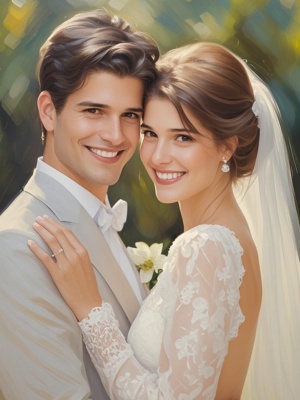The Art of Oil Painting Self Portraits: A Timeless Exploration of Identity
Introduction: The Enduring Appeal of Self-Portraiture
Oil painting self portraits represent one of the most intimate and revealing forms of artistic expression. For centuries, artists from Rembrandt to Frida Kahlo have used this medium to explore their identities, document their lives, and push creative boundaries. Unlike digital alternatives like AI painting, traditional oil portraits offer a tactile, deeply personal connection between artist and canvas.
The Historical Significance of Oil Self Portraits
From Renaissance to Modern Times
The tradition of oil painting self portraits dates back to the early Renaissance when artists began asserting their individual identities. Albrecht Dürer's 1500 self-portrait established the genre as both artistic exercise and personal statement. The slow-drying nature of oil paints allowed for meticulous detail and luminous skin tones that became hallmarks of the form.

Technical Evolution
Early practitioners developed techniques still used today:
- Underpainting with earth tones
- Building layers through glazing
- Creating texture with impasto
Creating Your Own Oil Painting Self Portrait
Essential Materials
Quality materials make a significant difference in oil painting self portraits. You'll need:

- Stretched canvas or prepared panel
- A range of bristle and sable brushes
- Professional-grade oil paints
- Odorless mineral spirits for thinning
- Linseed oil as a medium
The Creative Process
Successful oil painting self portraits require careful planning:
1. Set up proper lighting to create dramatic shadows and highlights. Natural north light works best for accurate skin tones.
2. Create preliminary sketches to work out composition. Many artists use digital references from multiple angles.
3. Begin with an underpainting in burnt umber to establish values.
4. Build color gradually, working from dark to light areas.
Common Challenges and Solutions
Problem: Capturing Likeness
Solution: Use a mirror rather than photographs to maintain proper proportions. Take regular breaks to refresh your perspective.
Problem: Skin Tone Accuracy
Solution: Mix primary colors to create natural flesh tones rather than using pre-mixed colors. According to the National Gallery's conservation studies, historical portraits often used vermilion, lead white, and yellow ochre as base colors.
The Psychological Dimension
Creating oil painting self portraits serves as powerful self-reflection. Art therapists at institutions like the American Art Therapy Association note that the process helps artists:
- Process personal experiences
- Explore evolving identities
- Develop observational skills
Contemporary Approaches
Modern artists combine traditional techniques with new technologies. Some use digital tools for preliminary work before executing the final piece in oils. Others incorporate mixed media or abstract elements to reinterpret the genre.
Conclusion: A Living Tradition
Oil painting self portraits remain vital in our digital age precisely because they demand patience, skill, and introspection. Whether you're a beginner or experienced artist, creating a self-portrait in oils offers unparalleled opportunities for technical growth and personal discovery. The finished work becomes not just an image, but a tangible record of your artistic journey at a specific moment in time.

For those interested in exploring digital alternatives, our AI painting guide offers complementary approaches to portrait creation.